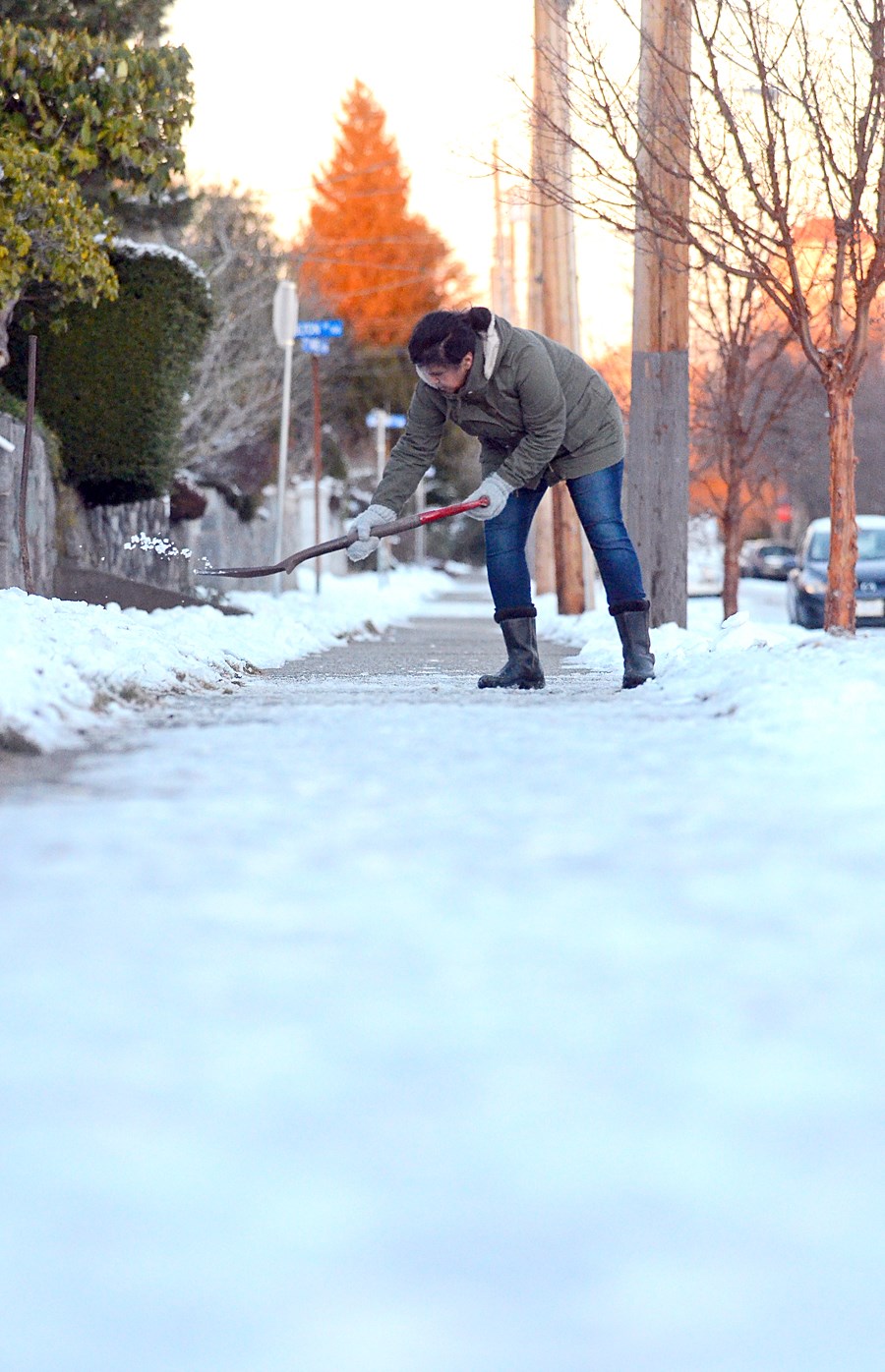New Westminster city council is confident it’s able to keep its roads clear if Mother Nature should decide it’s time for snow, but it’s not as sure about its sidewalks.
In response to last year’s significant snowfall, city staff reviewed the city’s snow and ice response and recommended some change to the 2009 plan. The updated plan increases the priority designation of streets from a two-priority system to a four-priority plan.
Coun. Patrick Johnstone said the city did a “pretty exceptional job in a bad situation” with roads during last winter’s snowfalls.
“The response we did was exceptional on the driving routes, but when it comes to the pedestrian realm, this event was a disaster for some people. I don’t use that term lightly,” he said. “There were stories of elderly people or people with mobility issues who were literally trapped in their house for weeks. They couldn’t safely get out and down the street to connect to other people or go to grocery stores or things like that.”
Johnstone said the new snow and ice response plan is a “much better plan” than the previous plan, but needs to do more work to address pedestrians’ needs. He noted that pedestrian accessibility isn’t listed as a priority in the plan.
* Priority 1: Arterial streets, roads providing major access for emergency vehicles and primary care facilities, and major roads with steep hills. At least two lanes will be plowed, salted and sanded as needed during the snowfall and cleared within 24 hours after the end of snowfall.
* Priority 2: Major collectors, bus routes and rapid transit stations, schools along steep hills and arterial bike routes. At least two lanes will be plowed, salted and sanded as needed, within 48 hours after the end of snowfall.
* Priority 3: Neighbourhood collectors, major civic facilities and schools in flat areas. These routes will be done within 24 hours after Priority 2 routes are complete.
* Priority 4: Local routes, only-access lanes for vehicles and solid waste collection. These will be done within 24 hours after Priority 3 routes are complete.
Council endorsed the plan, but also passed a motion directing staff to continue to work on developing a snow response plan that prioritizes pedestrian safety and addresses the concerns raised by the city’s advisory committee for transit, bicycles and pedestrians.
“I think we have to continue to improve some of the things we are doing. I think we need to give greater consideration to pedestrians,” said Coun. Mary Trentadue. “If we as a city are unable to take care of the sidewalks, we need to do a better job of encouraging our residents to do it. I think part of it is education. I think there are many people who don’t really think about clearing their sidewalk or even realize it’s their responsibility.”
Trentadue said some people are physically unable to clear their sidewalks, so the city has to consider what to do in those situations.
“I’d hate to see the city fining people when they’re not capable of doing it,” she said, “so, how do we help those people?”
While many people have the perception that Vancouver gets little snow, Coun. Jaimie McEvoy said Environment Canada records show there was an average annual snowfall of 17.5 inches in Vancouver between 1981 and 2010. He said the city needs a snow plan that is good for pedestrians as well as cars.
“Although I can’t say we were perfect, when you look at our situation compared to many of the neighbouring municipalities, I think we were very well organized and did a lot of things well. I think a lot of credit needs to go to the crews,” said Mayor Jonathan Cote. “I think this allows us to take our previous snow plan and take it to the next level and address some of the gaps.”
Cote said New Westminster has one of the highest percentages of people in the Lower Mainland who walk as a mode of transportation and the city has put walking as a transportation priority. He said “it’s not good enough” to discount that when the weather conditions get bad.
“I was heartbroken during the storm last year, getting emails from seniors, from people saying, ‘I’ve been trapped in my house for three weeks, I don’t know what to do.’ Those are the types of situations we need to make sure we are providing access for in our community,” he said. “So many people rely on being able to walk and get around our community as a mode of transportation. Having said that, that’s easier said than done.”



